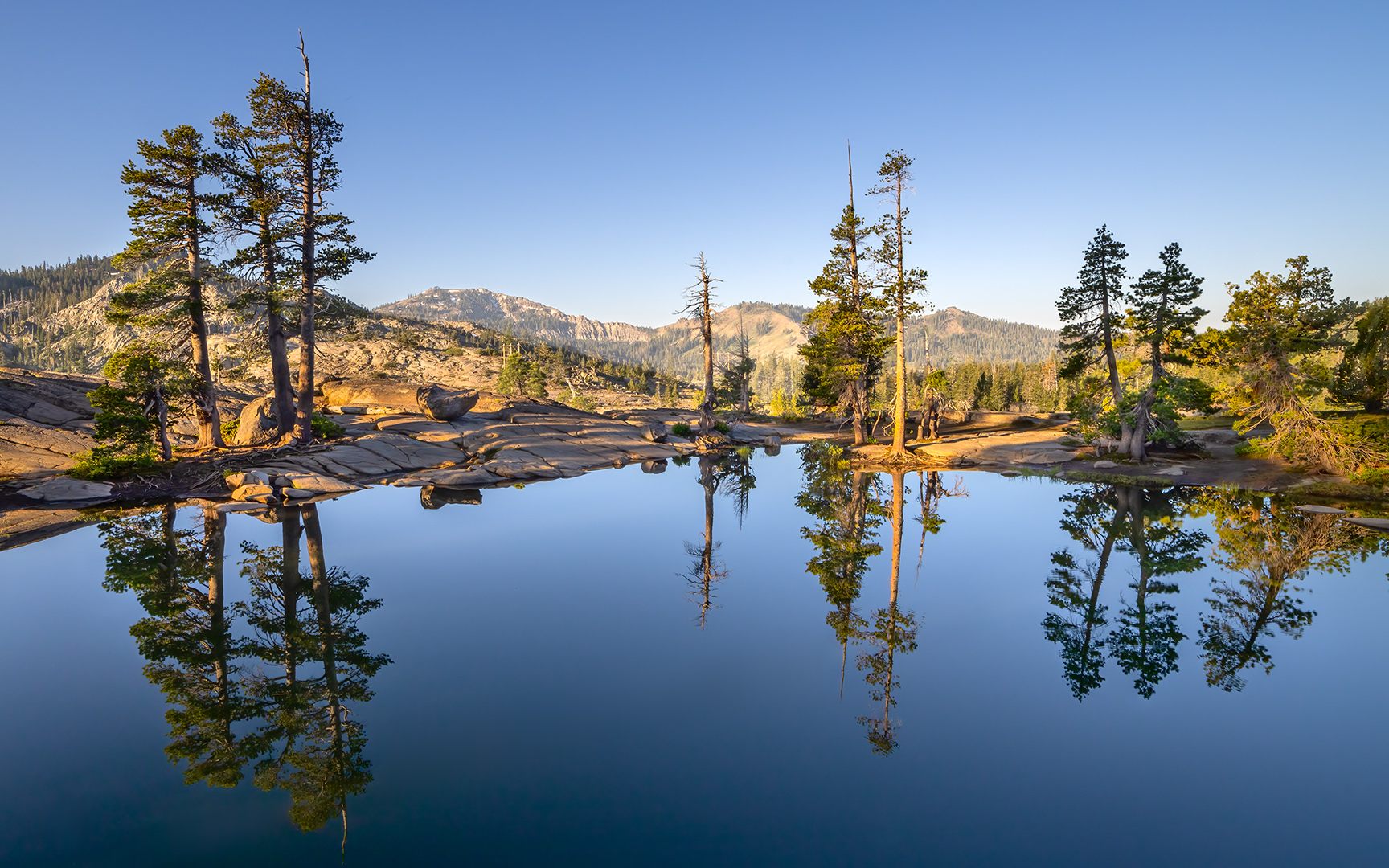Ken Fowkes
About the Image(s)
I find landscape photography to be very difficult, but I enjoy being out in nature so I keep trying. This is a spot I love returning to, especially early in the morning before the wind brings ripples to the surface of this pond. This early in the morning, the surface of the pond is shaded, as is much of the area around the pond. But farther away the land is awash with morning light. I often hear that one's eye is drawn to the brightest parts of a photograph, that if one wants attention in the foreground of a landscape (as I do here) it needs to be bright. But that's really not an option here, is it? If I want the distant landscape to be context rather than subject, what can I do?
Well, the eye is drawn to color and contrast too, right? I'm lucky with color in this scene because the reflected colors (both sky and trees) are more saturated than the actual colors. And I'm also lucky with contrast because the bottoms of the reflected trees have sky behind them rather than landscape.
To further deemphasize the background, to ensure it plays a supporting role rather than grabbing the spotlight, I did the opposite of what I often hear should be done: I brightened it! Importantly (I think) I also lowered the contrast by further lightening the blacks. Any feedback you feel like sharing is welcome, but I'm particularly interested in where your eye is drawn, whether the brighter background draws your attention, or whether the lower contrast back there helps hold your attention in the foreground.
Canon EOS R5 with a Rokinon 14mm f/2.8 lens, 1/60sec, f/8, ISO 250
7 comments posted
1.it has a Symmetry Through Reflection
2. Foreground Anchors: the reflected trees
3. Layering: The image is beautifully layered-foreground reflected trees, midground rocks, and background mountains-creating a sense of scale and immersion.
Excellent Work
Posted: 07/27/2025 01:31:58
